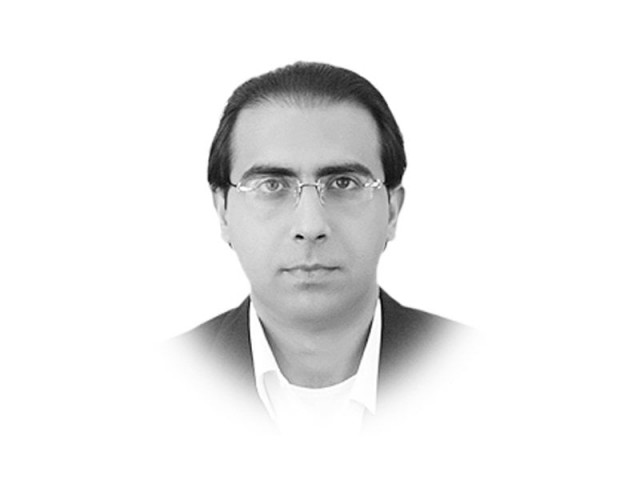From the ruins
The willingness to fight the invaders has never been as relevant as now. Yet, at the national level, there is none.

The writer is a lawyer and partner at Ijaz and Ijaz Co
in Lahore
saroop.ijaz@tribune.com.pk
“Marsoon, marsoon, Sindh na daisun” were amongst the last words of Hosh Muhammad Sheedi, the commander of the Talpur Army who died fighting the British Army led by Sir Charles Napier. The willingness to fight the invaders has never been as relevant as now. Yet, at the national level, there is none. The confusion largely owes to the lack of clarity about who we are. As an example, Mr Imran Khan relatively recently asserted his intention of coming to Sindh, relentlessly and multiple times like Sultan Mahmood Ghaznavi. Mr Khan has made one of the common mistakes; mistakes about our identity, about the beginning of our history. To give an example outside of our context, Miriam Ferguson, a former governor of Texas, is attributed as saying, “If English was good enough for Jesus Christ, it ought to be good enough for the children of Texas.”
The Sindh Festival’s opening at Moenjo Daro was, at least, an attempt at finding out identity. There were people living in organised, planned communities, long, long before Muhammad Bin Qasim came to Sindh. Sultan Ghaznavi and Muhammad Bin Qasim are no doubt central figures in our history. However, these and others like them are not all there is to us.
One common refrain for anything to do with any particular culture and ethnicity is the criticism that it is somehow divisive. We are all Pakistanis and we are one, etc. Well intentioned as it might be, it proves to be quite silly on the slightest bit of examination. One preferred variation of this critique is that whenever ‘Shias’ are killed for being ‘Shia’, well-meaning patriotic people are quick to point out that it is appropriate that we say ‘Pakistanis’ have been killed, so as not to create divisions. All right, however, why stop there, why not say ‘Asians’, or better still, ‘humans’ have died.
To celebrate the culture of Sindh through a festival named the Sindh Festival does not create any provincial divisions; on the contrary, it seems to be the only way that a sustainable national identity can be formed. They would rather have a ‘Pakistan Festival’. Perfectly reasonable, however, identities do not start from the top or the most recent. Unfortunately, we have practically no national identity right now, apart from ‘we are all Muslims’ (makes the white part of the flag quite redundant, does it not), and hence, by some logical extension, ‘we are all Arabs’. The culture of Sindh (both the Urdu-speaking and Sindhi-speaking), of Punjab, Khyber-Pakhtunkhwa (K-P), Balochistan, Seraikis, Hazaras need to be celebrated. To insist upon there being one nation in Pakistan as a starting point is to insist upon a losing position.
The Sindh Festival has achieved what it set out to do, to create interest in Moenjo Daro, to create interest in Sindh. The festival sets out to do another thing, namely to destroy the stereotypes and one would think, it has been successful in that endeavour. Criticism of the festival can be made, some legitimate and some not so. Yet, it has generated a conversation. It has shown that the culture of Sindh is not a monolith and nor is it fixed in time; fusion between the ancient and the modern was what the inaugural ceremony of the Sindh Festival allowed. If there can be a similar K-P festival, perhaps, the lazy narrative sold in the rest of the country (mostly in Punjab) of romanticising our ‘annoyed brothers’ might be put to rest.
The fault lines in this country are deepening to the point of implosion, God forbid. The fault lines are not only, ethnic and linguistic, but also rural-urban. They will not go away by us pretending they do not exist. Perhaps, the objective should not be to make them disappear, that never works, but create a common thread, where everybody gets to maintain individuality. We have tried the top-down model once and have not still fully recovered from the aftermath.
Raja Porus, Hosh Sheedi and Bhagat Singh are what we need; the natives who have refused to be cowered down. The dancing girl of Moenjo Daro belongs to an era before our primetime chat shows. She would have been lynched within hours now. Yet, the dancing girl of Moenjo Daro is ‘us’ and from long before hysterical anchorpersons invaded. We need to have cultural festivals to know what is it that we stand for. What is it which distinguishes us from the adversary? Presently, we and the opponent have almost the exact same claim; unnervingly the opponent’s claim is that they are better than what we claim to be.
The Sindh Festival is us pushing back. The Sindh Festival is a sign of what is possible, even now. Mian Sahib, Mr Khan, your move.
Published in The Express Tribune, February 9th, 2014.
Like Opinion & Editorial on Facebook, follow @ETOpEd on Twitter to receive all updates on all our daily pieces.













COMMENTS
Comments are moderated and generally will be posted if they are on-topic and not abusive.
For more information, please see our Comments FAQ